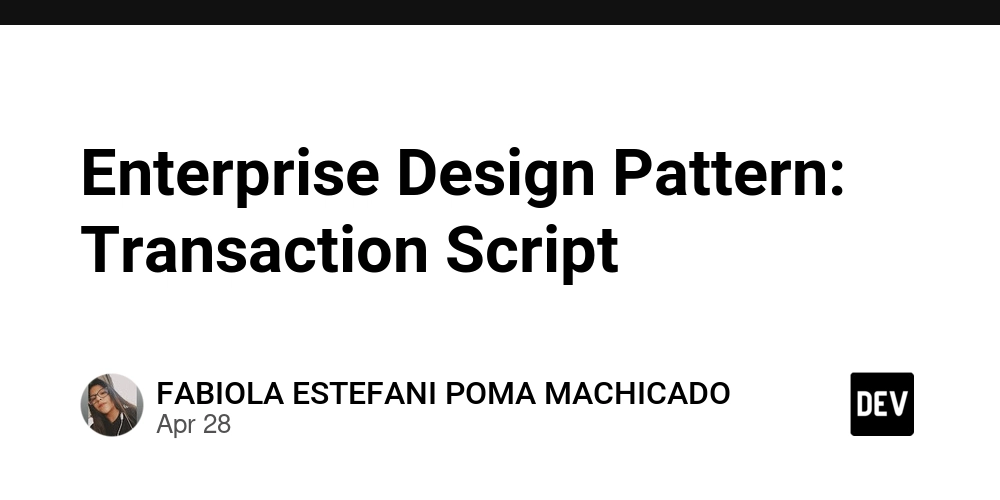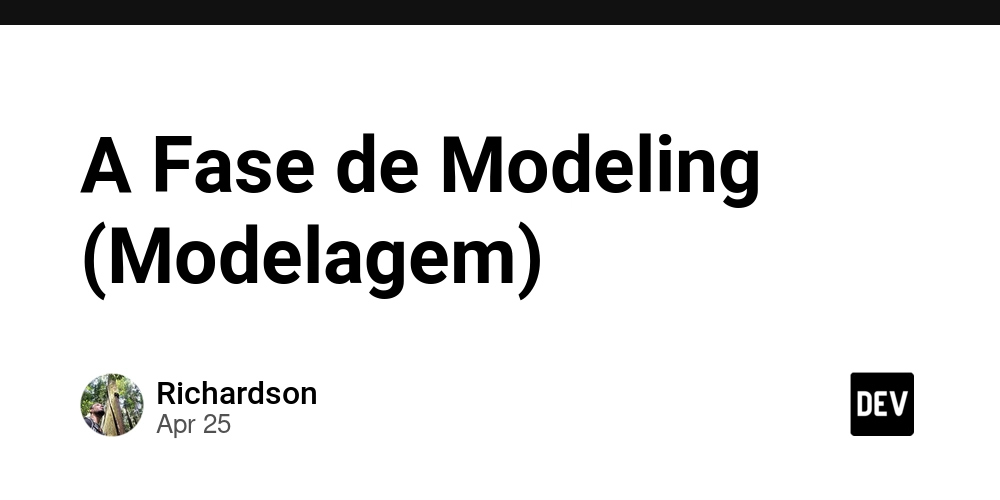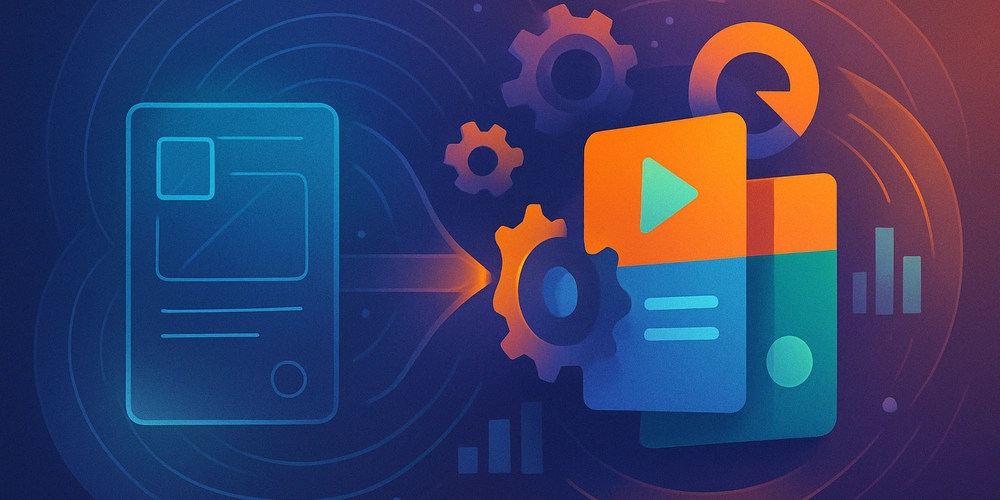Arbitrum One vs Arbitrum Nova: Comparative Analysis and Future Insights
Abstract: This post offers a comprehensive comparative analysis of Arbitrum One and Arbitrum Nova, the two leading Layer 2 scaling solutions built on the Ethereum blockchain by Offchain Labs. We explore their technical underpinnings, core features, use cases, challenges, and future outlook. Whether you are a developer, blockchain enthusiast, or industry stakeholder, understanding the nuances between these platforms is essential. In this post, we break down their differences, elaborate on optimistic rollups technology, and offer insights into blockchain scalability and innovative applications in gaming, decentralized finance (DeFi), and open-source development. Introduction Ethereum's increasing transaction demands and high gas fees have pushed developers to explore scalable, secure, and cost-efficient solutions. In this realm, Arbitrum One and Arbitrum Nova have emerged as prime contenders, embracing optimistic rollups to extend Ethereum's capabilities without compromising decentralization. This post dives deep into the core concepts, features, and technologies behind both solutions and explains why they are pivotal in driving blockchain adoption across various industries. Arbitrum One offers robust EVM-compatible scaling while Arbitrum Nova is geared towards high-volume applications like gaming and social platforms. Learn more about these technologies by visiting the Original Article. Background and Context Blockchain technology has advanced significantly in recent years. Ethereum, with its extensive ecosystem of decentralized applications (dApps), faces challenges such as network congestion and high transaction fees, thereby hampering mass adoption. Layer 2 solutions like Arbitrum address these challenges by processing transactions off-chain and thereby reducing cost and latency while keeping security intact. Optimistic rollups are a key innovation behind both Arbitrum One and Arbitrum Nova. Unlike some other scaling solutions, optimistic rollups assume transactions are correct by default and only engage with the main chain when a dispute arises. This mechanism significantly increases throughput by allowing a higher volume of transactions to be processed off-chain. Developers can learn more about the intricacies of blockchain technology from this guide on what is blockchain. Historically, blockchain scalability has been a balancing act between decentralization, security, and transaction throughput. Arbitrum's approach leverages data compression and optimistic rollups to create solutions that can adapt to various needs—from complex smart contracts to transactions typical in gaming and social dApps. Core Concepts and Features In this section, we break down the most critical aspects of Arbitrum One and Arbitrum Nova. Although both are designed to scale Ethereum, their features, technical approaches, and targeted applications differ. Arbitrum One EVM Compatibility: Arbitrum One is fully compatible with the Ethereum Virtual Machine, which means developers can port their existing Ethereum dApps with minimal adjustments. High Throughput: With increased transaction processing capabilities, it supports applications that demand high computational power. Robust Security Model: Leveraging optimistic rollups ensures that transactions are secure, with disputes settled on-chain. Comprehensive Tooling: Developers benefit from extensive documentation and developer portals such as the Arbitrum Developer Portal and public chains documentation. Arbitrum Nova Tailored for Gaming and Social dApps: Arbitrum Nova is custom-designed to offer rapid transaction speeds and low fees, which are essential for gaming and social applications. Data Compression Techniques: With a focus on cost-efficiency, it compresses transaction data, leading to significant savings for high-frequency interactions. Flexibility and Customization: Nova allows for flexible configurations appropriate for applications where transaction speed is critical. Use in NFT and Gaming Ecosystems: Its design is especially attractive for developers exploring the intersection of blockchain and gaming, an area further explained in this article on NFTs in gaming. Comparative Feature Table Below is a table summarizing key attributes of Arbitrum One vs Arbitrum Nova: Feature Arbitrum One Arbitrum Nova EVM Compatibility Full compatibility with Ethereum smart contracts Focused on rapid transactions with selective EVM support Target Use Cases DeFi, complex dApps, general-purpose applications Gaming, social apps, NFT interactions Transaction Throughput High throughput with strong security measures Ultra-fast processing with low fee optimization Security Model On-chain dispute resolution with optimistic rollups Emphasis on cost reduction and speed through data compression Developer Adoption Extensive tool support and widely adopted framework Emerging ecosystem tailored f

Abstract:
This post offers a comprehensive comparative analysis of Arbitrum One and Arbitrum Nova, the two leading Layer 2 scaling solutions built on the Ethereum blockchain by Offchain Labs. We explore their technical underpinnings, core features, use cases, challenges, and future outlook. Whether you are a developer, blockchain enthusiast, or industry stakeholder, understanding the nuances between these platforms is essential. In this post, we break down their differences, elaborate on optimistic rollups technology, and offer insights into blockchain scalability and innovative applications in gaming, decentralized finance (DeFi), and open-source development.
Introduction
Ethereum's increasing transaction demands and high gas fees have pushed developers to explore scalable, secure, and cost-efficient solutions. In this realm, Arbitrum One and Arbitrum Nova have emerged as prime contenders, embracing optimistic rollups to extend Ethereum's capabilities without compromising decentralization. This post dives deep into the core concepts, features, and technologies behind both solutions and explains why they are pivotal in driving blockchain adoption across various industries.
Arbitrum One offers robust EVM-compatible scaling while Arbitrum Nova is geared towards high-volume applications like gaming and social platforms. Learn more about these technologies by visiting the Original Article.
Background and Context
Blockchain technology has advanced significantly in recent years. Ethereum, with its extensive ecosystem of decentralized applications (dApps), faces challenges such as network congestion and high transaction fees, thereby hampering mass adoption. Layer 2 solutions like Arbitrum address these challenges by processing transactions off-chain and thereby reducing cost and latency while keeping security intact.
Optimistic rollups are a key innovation behind both Arbitrum One and Arbitrum Nova. Unlike some other scaling solutions, optimistic rollups assume transactions are correct by default and only engage with the main chain when a dispute arises. This mechanism significantly increases throughput by allowing a higher volume of transactions to be processed off-chain. Developers can learn more about the intricacies of blockchain technology from this guide on what is blockchain.
Historically, blockchain scalability has been a balancing act between decentralization, security, and transaction throughput. Arbitrum's approach leverages data compression and optimistic rollups to create solutions that can adapt to various needs—from complex smart contracts to transactions typical in gaming and social dApps.
Core Concepts and Features
In this section, we break down the most critical aspects of Arbitrum One and Arbitrum Nova. Although both are designed to scale Ethereum, their features, technical approaches, and targeted applications differ.
Arbitrum One
- EVM Compatibility: Arbitrum One is fully compatible with the Ethereum Virtual Machine, which means developers can port their existing Ethereum dApps with minimal adjustments.
- High Throughput: With increased transaction processing capabilities, it supports applications that demand high computational power.
- Robust Security Model: Leveraging optimistic rollups ensures that transactions are secure, with disputes settled on-chain.
- Comprehensive Tooling: Developers benefit from extensive documentation and developer portals such as the Arbitrum Developer Portal and public chains documentation.
Arbitrum Nova
- Tailored for Gaming and Social dApps: Arbitrum Nova is custom-designed to offer rapid transaction speeds and low fees, which are essential for gaming and social applications.
- Data Compression Techniques: With a focus on cost-efficiency, it compresses transaction data, leading to significant savings for high-frequency interactions.
- Flexibility and Customization: Nova allows for flexible configurations appropriate for applications where transaction speed is critical.
- Use in NFT and Gaming Ecosystems: Its design is especially attractive for developers exploring the intersection of blockchain and gaming, an area further explained in this article on NFTs in gaming.
Comparative Feature Table
Below is a table summarizing key attributes of Arbitrum One vs Arbitrum Nova:
| Feature | Arbitrum One | Arbitrum Nova |
|---|---|---|
| EVM Compatibility | Full compatibility with Ethereum smart contracts | Focused on rapid transactions with selective EVM support |
| Target Use Cases | DeFi, complex dApps, general-purpose applications | Gaming, social apps, NFT interactions |
| Transaction Throughput | High throughput with strong security measures | Ultra-fast processing with low fee optimization |
| Security Model | On-chain dispute resolution with optimistic rollups | Emphasis on cost reduction and speed through data compression |
| Developer Adoption | Extensive tool support and widely adopted framework | Emerging ecosystem tailored for new and dynamic use cases |
Both systems use optimistic rollups as the underlying mechanism, yet their focus diverges based on the application-specific demands.
Applications and Use Cases
Both Arbitrum One and Arbitrum Nova play critical roles in enabling advanced blockchain applications. Here are some practical examples:
-
DeFi Platforms:
- Arbitrum One supports decentralized finance (DeFi) protocols requiring secure and complex smart contract logic. This is vital for applications like decentralized exchanges, lending protocols, and yield farming platforms. For more on decentralized finance initiatives, check Arbitrum and De-Fi Yield.
-
Gaming and Social Applications:
- Arbitrum Nova is designed to handle a high volume of micro-transactions, making it ideal for gaming environments where rapid transaction speeds and low fees are crucial. These characteristics are essential for in-game economies and social dApp interactions.
- Example: A blockchain-based game could leverage Nova's speed for nearly instantaneous token transfers, creating a more seamless gaming experience.
-
NFT Marketplaces:
- Both solutions provide benefits for NFT marketplaces, but Nova's low fees make it particularly attractive for artists and creators looking to mint and trade NFTs without the high costs sometimes associated with Layer 1 Ethereum transactions.
- Developers interested in NFT innovations can explore projects like NFTs in Gaming or check out examples on NFT platforms outlined in the Arbitrum and NFT Marketplaces page.
Key Benefits in a Bullet List:
-
For Developers:
- EVM Compatibility reduces barrier to entry.
- Fast and cost-efficient transactions.
- Robust developer documentation.
-
For End Users:
- Lower gas fees.
- Reduced network congestion.
- Faster transaction finality.
Challenges and Limitations
While both Arbitrum One and Arbitrum Nova bring significant advantages, they are not without challenges:
- Technical Complexity: Implementing Layer 2 solutions still requires developers to understand new paradigms of off-chain processing and dispute resolution.
- Adoption Barriers: Transitioning from Layer 1 to Layer 2 can be challenging, particularly for established dApps. The learning curve and potential retrofitting of existing smart contracts may slow down adoption.
- Security Trade-offs: Although optimistic rollups are robust, they come with a time delay for challenge periods. This can be viewed as a risk for certain use cases requiring instantaneous finality.
- Interoperability Considerations: Integrating with multiple blockchains and ensuring seamless interoperability remains an ongoing challenge. Efforts like Arbitrum and Ethereum Interoperability continue to address these issues.
Industry experts also discuss the broader context of open-source and blockchain scalability in articles like Blockchain Scalability Solutions and Sustainable Blockchain Practices.
Future Outlook and Innovations
The future for Layer 2 solutions, notably Arbitrum One and Arbitrum Nova, appears promising. As blockchain technology evolves, we can expect several trends and innovations:
Enhanced Tooling and Developer Support:
Continuous improvements in developer tools and documentation will further reduce the friction for adopting Layer 2 solutions and foster innovation in decentralized applications.Hybrid Solutions:
Future architectures may merge the best aspects of both Arbitrum One and Arbitrum Nova, enabling customizable layers for different use cases. Such developments are part of the broader move toward more adaptable and efficient blockchain ecosystems.Integration with Emerging Technologies:
Integration with zero-knowledge proofs and other cryptographic innovations could further push the boundaries of scalability and privacy. Looking at emerging frameworks like oracle services could provide additional benefits to decentralized applications.Increased Institutional Adoption:
With the growing institutional interest in blockchain, scalability solutions like Arbitrum may witness broader adoption in sectors like finance, supply chain, and digital identity management. Insights on institutional trends can be gleaned from topics such as Arbitrum and Institutional Adoption.
For more technical perspectives on related trends, check out these insightful dev.to posts:
- Understanding GitHub Sponsors Fueling Open Source Development
- Navigating the World of Open Source Funding Strategies
- Arbitrum and Community Governance: Pioneering Decentralized Decision Making
These posts highlight how open-source funding, community governance, and transparent development practices are integral to the future of scalable blockchain technology.
Summary
In summary, both Arbitrum One and Arbitrum Nova are critical tools in Ethereum’s scalability toolkit. While Arbitrum One provides a robust, general-purpose Layer 2 solution emphasizing full EVM compatibility and security, Arbitrum Nova is optimized for high-speed, low-cost transactions—ideal for gaming and social platforms. The choice between these two depends on the specific needs of the application, whether that be complex DeFi systems or dynamic social and gaming dApps.
To recap the key points:
- Arbitrum One is designed for broader applications with high security and throughput, making it suitable for DeFi and dApps that rely on complete EVM support.
- Arbitrum Nova caters to use cases where speed and cost are paramount, such as gaming and NFT trading, by leveraging innovative data compression and flexible configurations.
- Both solutions harness the power of optimistic rollups, reducing Ethereum’s gas fees and network congestion while upholding security.
- The future of Layer 2 involves enhanced tooling, hybrid models, and stronger interoperability, which will likely foster even greater institutional and developer adoption.
As blockchain technology continues to evolve, these advancements also underscore the sustainable and flexible nature of decentralized solutions. For more information on related topics, consider exploring pages like Blockchain for Open Source Funding and Blockchain Scalability Solutions.
Final Thoughts
The rapid growth of blockchain technology has made it necessary to address scalability while safeguarding security and decentralization. Arbitrum One vs. Arbitrum Nova is more than just a technical comparison—it's a reflection of how innovation in distributed computing and off-chain transaction processing is shaping the next generation of digital applications.
While challenges remain—ranging from complex interoperability issues to ensuring robust adoption—both solutions represent significant steps forward in making blockchain technology more accessible and efficient. The continuous development and community-driven approach promise a future where Ethereum’s limitations are overcome, paving the way for broader adoption across DeFi, gaming, and diverse digital ecosystems.
By staying informed and adapting to these new developments, developers and industry stakeholders alike can harness the power of Layer 2 solutions to drive the next wave of blockchain innovation. As this ecosystem evolves, integrated solutions and hybrid models are likely to emerge, ensuring that the advantages of both Arbitrum One and Arbitrum Nova are realized to their fullest potential.
Whether you are building complex smart contracts or dynamic gaming dApps, understanding the nuances of these platforms will be crucial to your project’s success. For additional resources to deepen your technical expertise, you might also explore advanced guides at the Arbitrum Developer Portal and recent trends discussed in various dev.to posts.
Happy coding and scaling!
































































































































































![[The AI Show Episode 143]: ChatGPT Revenue Surge, New AGI Timelines, Amazon’s AI Agent, Claude for Education, Model Context Protocol & LLMs Pass the Turing Test](https://www.marketingaiinstitute.com/hubfs/ep%20143%20cover.png)































































































































![[DEALS] Koofr Cloud Storage: Lifetime Subscription (1TB) (80% off) & Other Deals Up To 98% Off – Offers End Soon!](https://www.javacodegeeks.com/wp-content/uploads/2012/12/jcg-logo.jpg)
























![Is this too much for a modular monolith system? [closed]](https://i.sstatic.net/pYL1nsfg.png)



















































































































_roibu_Alamy.jpg?width=1280&auto=webp&quality=80&disable=upscale#)




 CISO’s Core Focus.webp?#)






































































































![M4 MacBook Air Drops to Just $849 - Act Fast! [Lowest Price Ever]](https://www.iclarified.com/images/news/97140/97140/97140-640.jpg)
![Apple Smart Glasses Not Close to Being Ready as Meta Targets 2025 [Gurman]](https://www.iclarified.com/images/news/97139/97139/97139-640.jpg)
![iPadOS 19 May Introduce Menu Bar, iOS 19 to Support External Displays [Rumor]](https://www.iclarified.com/images/news/97137/97137/97137-640.jpg)







































































































